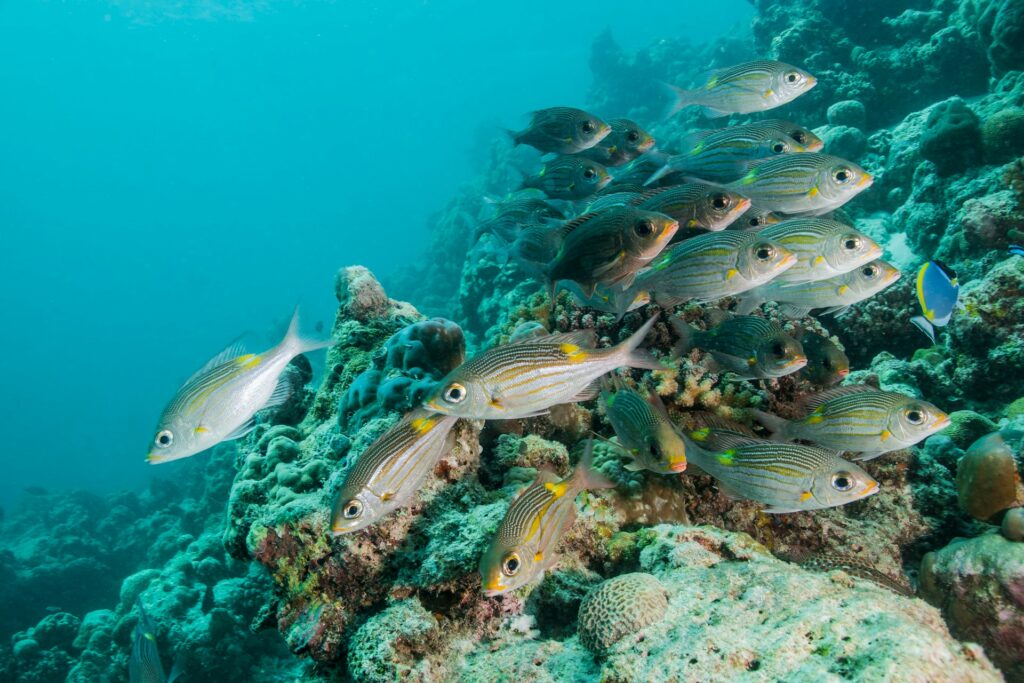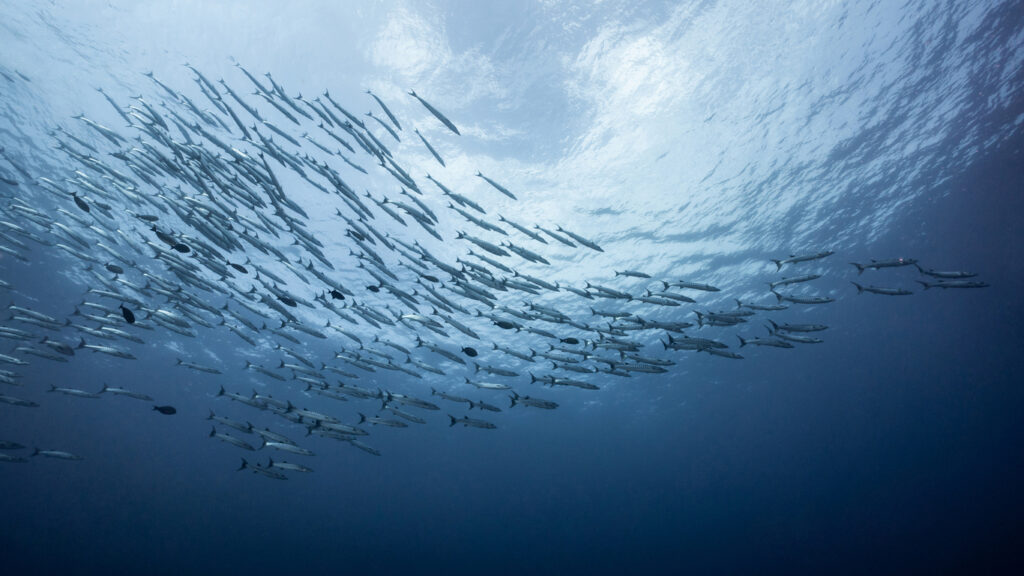
Fish don’t have eyelids. They don’t curl up in beds or snore, so it’s easy to assume they just keep swimming forever without rest. But they do sleep—it just looks very different from how we do it. Here’s how fish catch their version of sleep, and why it’s nothing like drifting off under a duvet.
1. They don’t close their eyes, but they still shut off.
Fish can’t close their eyes because they don’t have eyelids, but that doesn’t mean they’re always alert. During sleep, their brain activity slows down, and their movements drop to a minimum. You might see them hovering in place, barely moving, just gently drifting in the current. This low-energy state is their version of rest. There’s no snoring or dreaming (as far as we know), but their bodies are definitely powering down. It’s subtle, but it’s sleep all the same.
2. They sleep with their eyes open.
Since they don’t have eyelids, fish sleep with their eyes wide open. That sounds kind of creepy, but it’s just how their bodies are built. Their brains do the resting while their eyes stay exposed to the water around them. This also means fish are still somewhat aware of their surroundings while they’re asleep. If something swims too close—or tries to eat them—they can react fast, even if they were mid-nap.
3. Sleep varies wildly by species.
Not all fish sleep the same way. Some float in place, some wedge themselves between rocks, and some even build little nests. Parrotfish, for example, secrete a slime cocoon to sleep in, like a fish sleeping bag that hides their scent from predators. Bottom-dwellers like catfish often rest on the riverbed, while reef fish tuck themselves into crevices. It’s not one-size-fits-all—each species has its own bedtime routine, shaped by where it lives and how it survives.
4. Fish don’t have REM sleep.
Humans cycle through different stages of sleep, including REM—the stage where dreams happen, and the brain is super active. Fish skip all that. Their sleep is more like a slow idle than a full system reboot. That doesn’t mean their rest isn’t important. They still need sleep to conserve energy, regulate their metabolism, and keep their brain functioning. It’s just a simpler, more stripped-down version of rest than ours.

5. They don’t sleep when they migrate.
Some fish, like salmon or tuna, swim for days on end when they migrate or hunt. During these intense stretches, they either skip sleep entirely or rest in micro-naps—brief pauses where they slow down just long enough to take the edge off. This isn’t sustainable long term, but it gets them through the journey. Once they reach a safer or calmer environment, they go back to a more normal rest pattern. Survival first, sleep later.
6. Light still affects their sleep cycle.
Even underwater, light plays a role in sleep. Fish tend to follow a circadian rhythm, just like humans do—they become less active at night and more alert during the day. Aquarium fish often rest when the lights go off because they associate darkness with downtime. In the wild, fish use natural changes in light—sunrise, sunset, even moonlight—to guide their activity. Their internal clocks may not be perfect, but they definitely respond to cues from the world around them.
7. Some fish “sleep swim.”
Species like sharks need to keep water moving over their gills to breathe. That means they can’t stop swimming completely. But they can rest certain parts of their brain while they keep moving forward—essentially sleep-swimming. This is similar to how dolphins sleep: one half of the brain stays alert while the other half rests. It’s not deep sleep, but it’s enough to keep them going without passing out mid-swim.
8. Baby fish sleep more than adults.
Just like human babies, young fish tend to sleep more than adults. Their brains and bodies are still developing, so they need more downtime to grow and recover. As they mature, their sleep needs drop a bit. This is one of those universal rules in biology—growth needs rest. Whether you’re a toddler or a tiny guppy, sleep is a major part of how the body builds itself up.
9. Stressed fish sleep less (and worse).
If a fish is stressed—due to poor water quality, noise, overcrowding, or sudden changes—it might skip sleep altogether. Its body stays in a heightened state, ready to react to danger, and that makes proper rest almost impossible. In tanks, this can lead to health problems over time. Just like with people, poor sleep in fish can mess with their immune system, make them more anxious, and shorten their lifespan. Calm fish = better fish naps.
10. You can usually tell when a fish is asleep.
If your pet fish is hanging still near the bottom of the tank, maybe tucked into a plant or hiding spot, and not reacting much—you’re probably watching it sleep. The breathing will slow slightly, and they won’t respond unless something startles them. It might look like zoning out, but they’re not just being lazy. They’re recharging, fish-style. So next time you see your guppy floating like it’s daydreaming, give it a minute—it’s just getting a bit of well-earned rest.